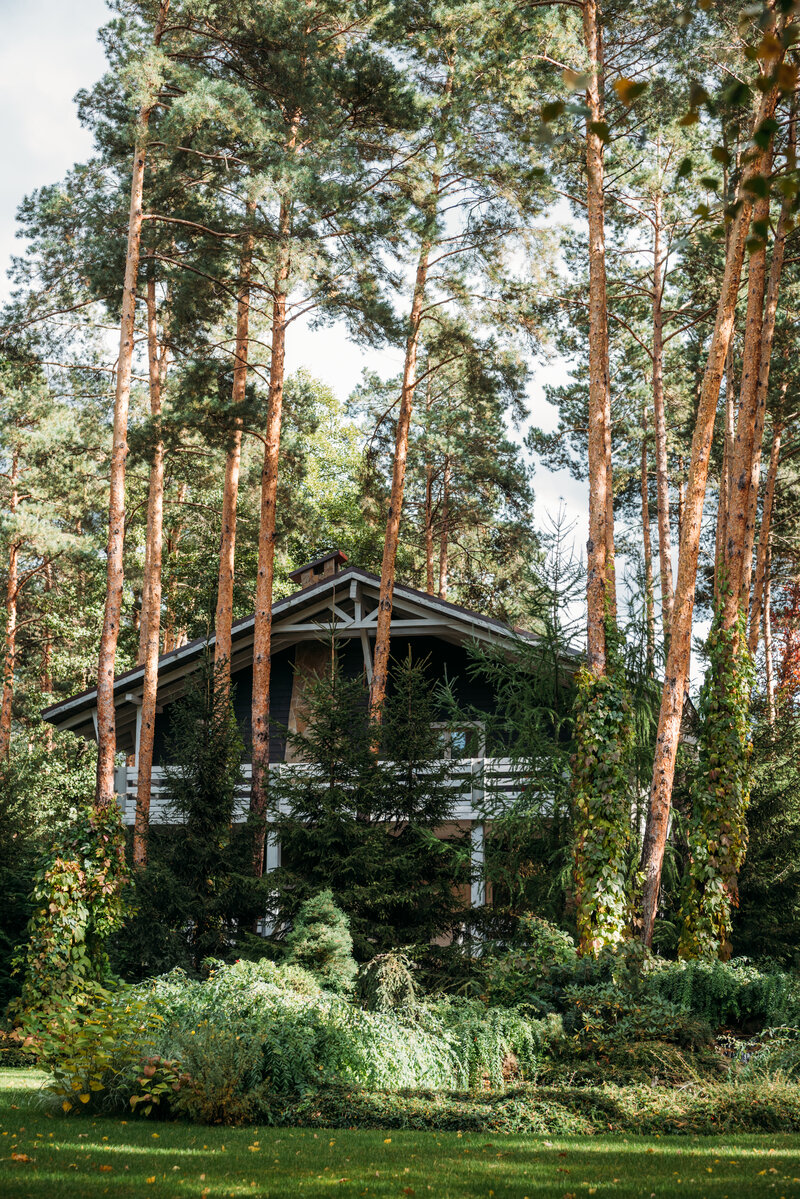
We spend quite a bit of time educating clients about the importance of roof maintenance when it comes to preserving their roof’s lifespan (and warranty!), not to mention the structural components of their home or business.
The trees that surround the building are also an important consideration. Trees impact roofs in big ways, from the leaves and twigs that block gutters and lead to water damage to branches that can drop and damage the roof.
5 Things You Can Do To Protect Your Roof From Tree Damage
So, during the fall and early winter months, when homeowners look to get their roofs in shape for the storm season, we also recommend taking the steps necessary to protect your roof from tree damage.
Consult with a tree expert for tree maintenance
Any tree that could compromise your roof has a trunk or branches large enough that you should rely on experts to do any trimming, pruning, or restoration work. Before making physical changes to any tree, consult with a local arborists or tree experts. They will come out and take a look at the trees you have, and explain what steps are necessary to both support the health and future growth of the tree while also prioritizing roof and building safety.
The arborist may also recommend removing or cutting down trees that are compromised and that risk falling over completely. As you can imagine, a tree falling on a roof usually “wins,” and it is the roof and home that collapse under its weight.
Clean debris from the roof and gutters
The “first line” of damage a tree does to a roof is shedding leaves and twigs that accumulate over time. If you don’t observe regular roof maintenance on an annual or seasonal basis, those wind up getting wet, soggy, and can lead to leak problems.
In a storm, those leaves and twigs may wash down into the gutters and clog them up. This also results in water infiltration or potential leak damage that compromises both the roof system and exterior wall and can potentially impact your foundation. Over years of accumulation, the combination of tree debris and moisture can also cause algae build-up, which deteriorates roofing materials.
Inspect shingles regularly
Unless you have a multi-story roof, in which case the professionals should always be involved, you can inspect the majority of your roof’s shingles by looking carefully from ground level or by using a ladder as per the manufacturer’s safety instructions.
Broken and falling branches, or overhanging branches that are blown repeatedly over the shingles, are notorious for scratching, chipping, and dislodging shingles. Since shingles form the first line of defense between your roof and rainy weather, they need to be repaired or replaced whenever they are damaged or showing extreme signs of wear.
That said, annual tree maintenance keeps branches pruned and trimmed up or away from the surface of your shingles, supporting the advertised life of your shingles and minimizes repairs and replacement costs.
Remove dead, weak, diseased, or unsupported limbs
Old and established trees can have massive limbs. In some cases, these limbs are as big as full-grown trees. As you can imagine, these limbs can do just as much damage to the roof as a fallen tree. Remove any limbs that look to compromise your roof.
Again, a licensed arborist or tree expert is the one to make the determination. Limbs that look perfectly healthy (bursting with foliage) can actually have quite hollow centers. Tree specialists are the only ones who can know for sure which limbs or branches should stay and which should go and will schedule tree maintenance accordingly.
Inspect attic for rodent infestations
All those beautiful shade branches that cool your home in the summer and protect your roof from UV damage from the sun can also become rodent superhighways. Once rodents are established in your attic, they can chew through structural elements, including wood, insulation, and sealing, leading to further roof and structural damage.
The good news is that you don’t have to eliminate those branches at all. Rather, branches need to be cut back so they are far enough away that pesky rodents aren’t willing to jump the distance out or down to your roof. Keeping the ends/tips of tall plants, shrubs, and tree branches at least 6 feet from the roof, eaves, vents, attic penetrations, and utility lines. The good news is that this also mitigates the risk of shingle damage we mentioned above.
The team at Pacific Coast Roofing is happy to refer you to our preferred tree maintenance experts in the area. You can also schedule a consultation for a roof inspection to protect it from tree damage.

